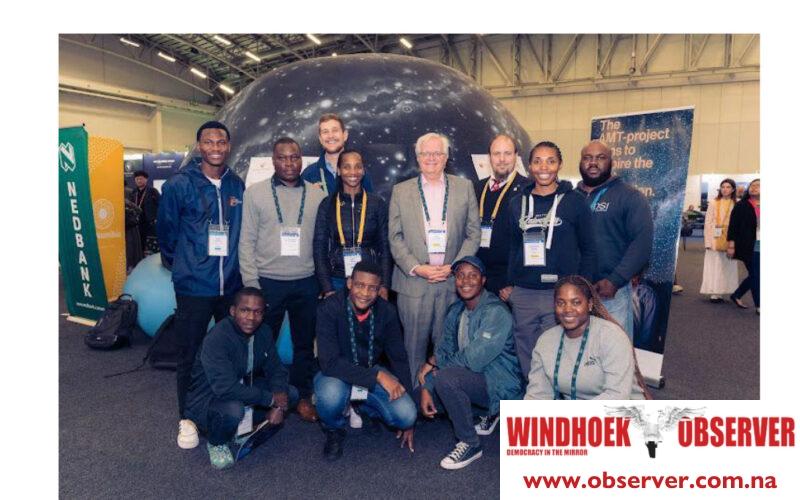Niël Terblanché
While the Africa Millimetre Telescope (AMT) Mobile Planetarium continues to expand its reach across the country, the project has already established itself as a beacon of inspiration for the next generation of scientists and innovators.
The AMT Mobile Planetarium recently celebrated a successful first year of operations, having hosted 63 events and reaching more than 9 000 students across the country in 2024.
The inflatable, interactive planetarium is a collaboration between the University of Namibia, the AMT Project, Radboud University in the Netherlands, and the Dutch School for Astronomy (NOVA).
Its mission is to inspire young minds and promote science, technology, engineering, and mathematics (STEM) education through hands-on astronomical experiences.
Nedbank pledged N$450 000 to the project in November 2023, providing vital support for its activities over three years.
“We believe that education is the key to unlock potential and drive progress. The Mobile Planetarium Project has been a shining example of how we can make a meaningful impact by bringing science to life for students,” Nedbank spokesperson, Selma Kaulinge said.
In the past year, the mobile planetarium reached students and teachers in the Khomas, Hardap, ǁKaras, Oshana, and Omusati regions, ensuring children from diverse backgrounds could experience the magic of space exploration.
According to Kaulinge, the project gained international recognition when it was showcased at the 2024 International Astronomical Union (IAU) General Assembly in Cape Town, where notable figures such as Nobel Prize winner Prof Brian Schmidt were in attendance.
The Mobile Planetarium Programme liaison, Zandré Duvenhage, expressed excitement about the project’s growth.
“We are excited about reaching new areas in 2025, including remote regions like Katima in Namibia’s Zambezi Region. Nedbank Namibia’s support is critical in helping us achieve these goals,” he said.
Duvenhage added that the sponsorship has not only helped sustain the project but also supported student presenters.
“This dual impact—of sustaining the project and investing in the future of young Namibians—has truly been invaluable,” he added.




